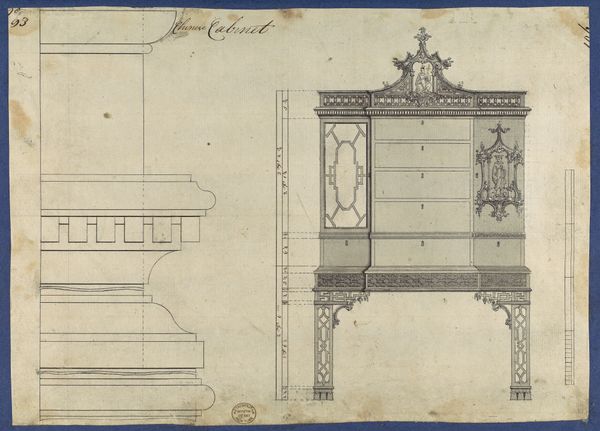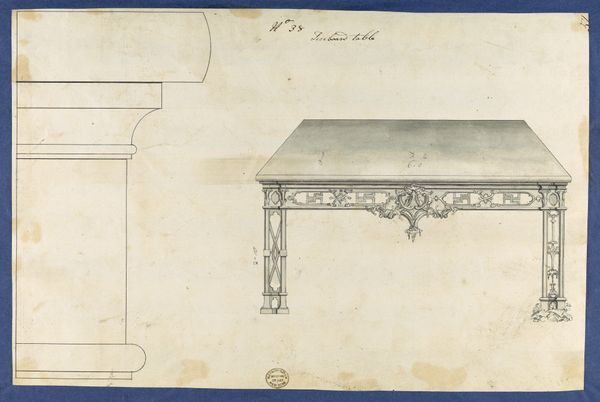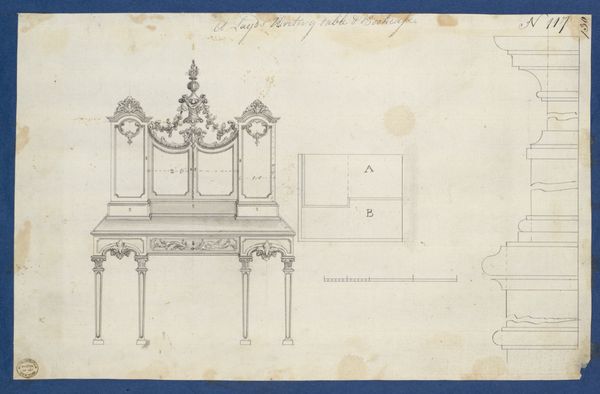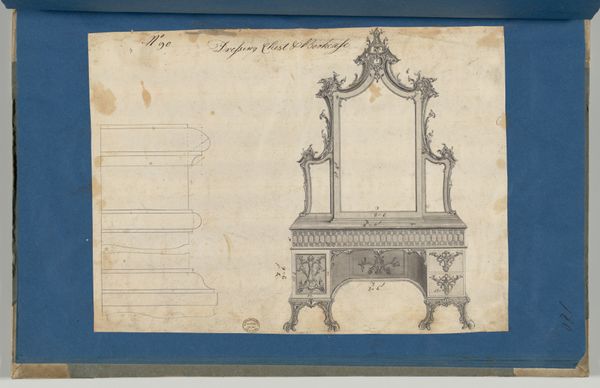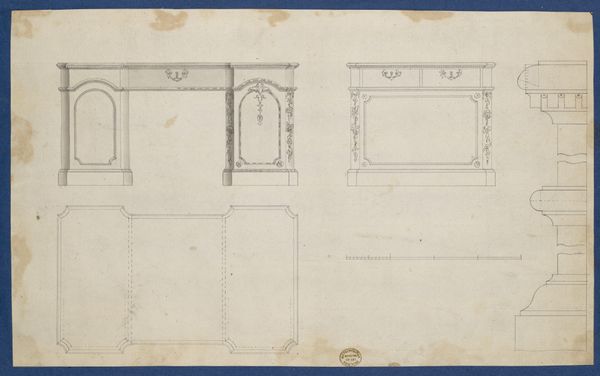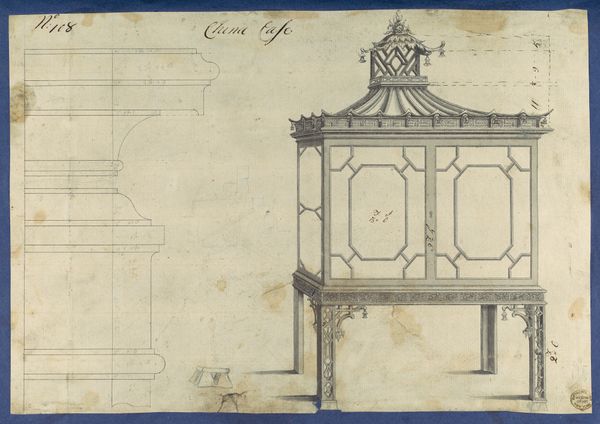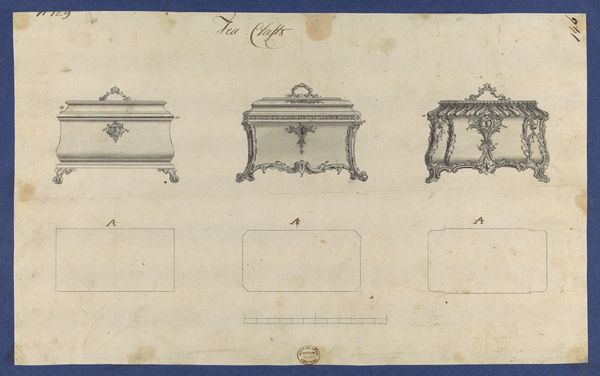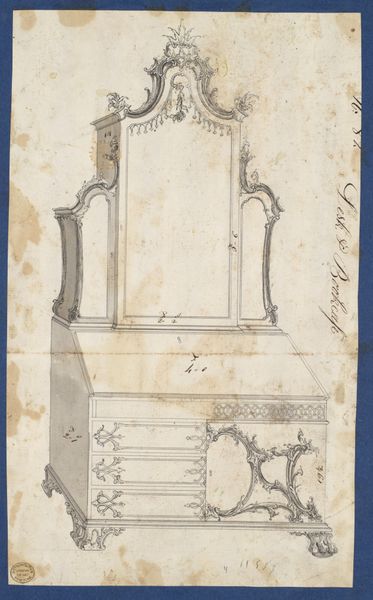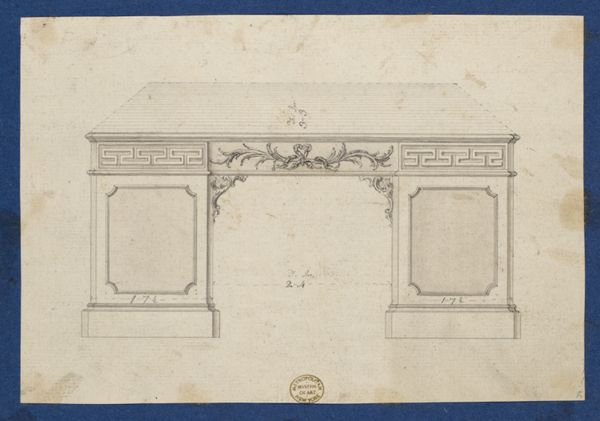
Gothic Clothes Chest, from Chippendale Drawings, Vol. II 1753
0:00
0:00
drawing, print, paper
#
drawing
# print
#
furniture
#
paper
#
geometric
#
history-painting
Dimensions: sheet: 7 7/16 x 13 1/2 in. (18.9 x 34.3 cm)
Copyright: Public Domain
Editor: This is "Gothic Clothes Chest, from Chippendale Drawings, Vol. II," created in 1753 by Thomas Chippendale. It's a drawing and print on paper, currently held at the Metropolitan Museum of Art. It’s interesting seeing this design; it seems almost like a stage set, with all the decorative, geometric flourishes. What connections do you make with this piece? Curator: What strikes me is the title itself: "Gothic Clothes Chest." Chippendale wasn't simply designing furniture, he was engaging with a cultural fascination – or perhaps even a cultural anxiety – regarding the past. Think about what "Gothic" meant in the 18th century. It wasn't just an architectural style, it represented a specific history, linked to the medieval era, to ideas of religious authority, and even to notions of British identity formation. How do you see that playing out in the design itself? Editor: Well, the pointed arches and the ornate detailing certainly evoke Gothic architecture. But placing it on a clothes chest... is he making a statement about reclaiming the past for domestic life? Or is he maybe commenting on class and how design and historical objects intersect with how we decorate our space? Curator: Precisely. Consider also the act of “drawing” a chest. This wasn’t about function in the way we might assume – it was a way of visualizing aspiration, luxury and knowledge all at once. To own such a piece meant participating in a certain discourse. It meant having not just money, but taste and, crucially, an understanding of history. Editor: So, it’s like the object itself becomes a symbol, communicating far more than its practical use? It also seems like appropriation - can someone even own the style or era, and build it in to domestic life? Curator: Yes, and that brings up fascinating questions about ownership, representation, and the power dynamics inherent in design and display. How does access shape our perception and expression of art history? Editor: That definitely gives me a lot to think about - I never considered furniture could speak to cultural anxieties about history and class!
Comments
No comments
Be the first to comment and join the conversation on the ultimate creative platform.


